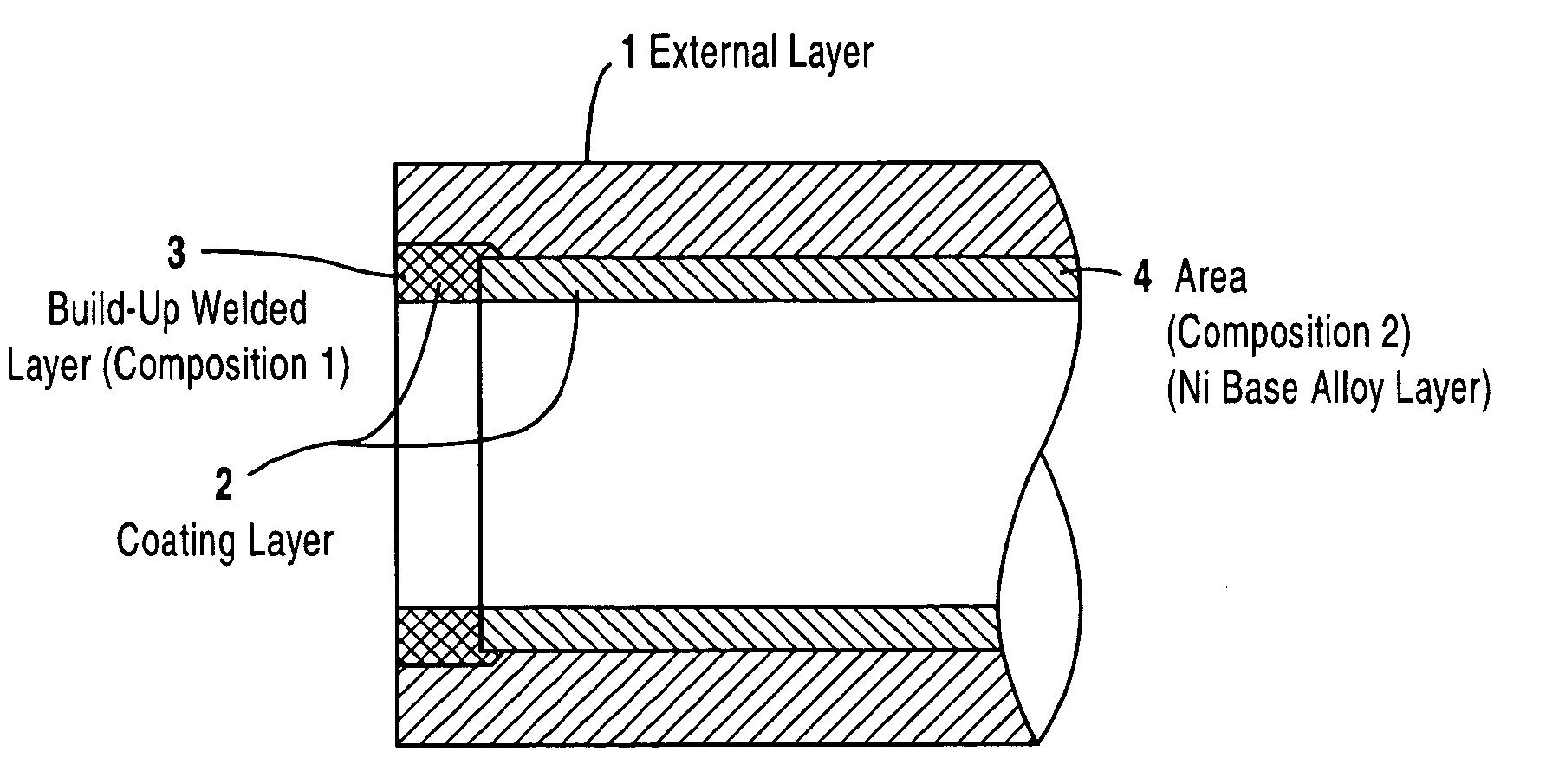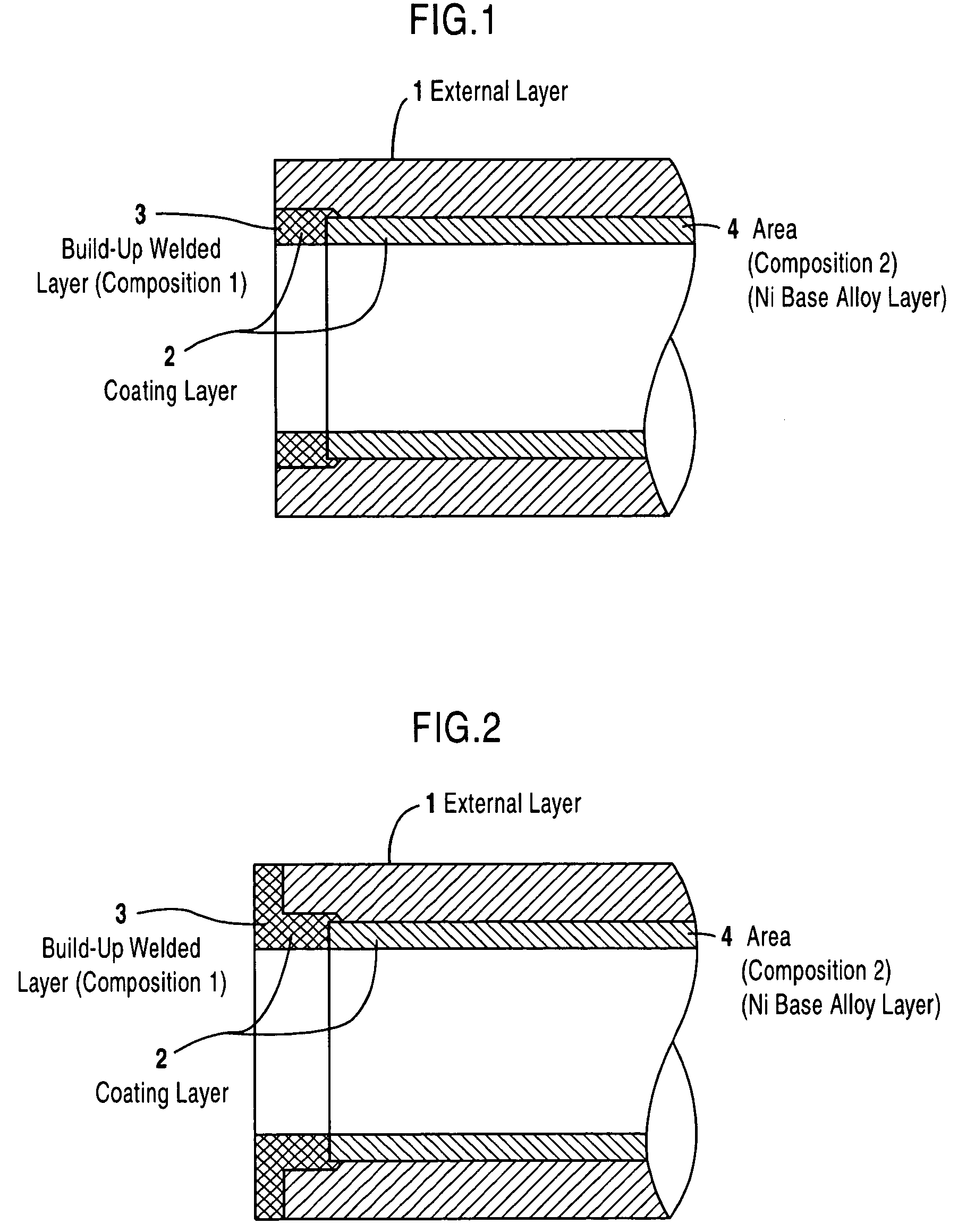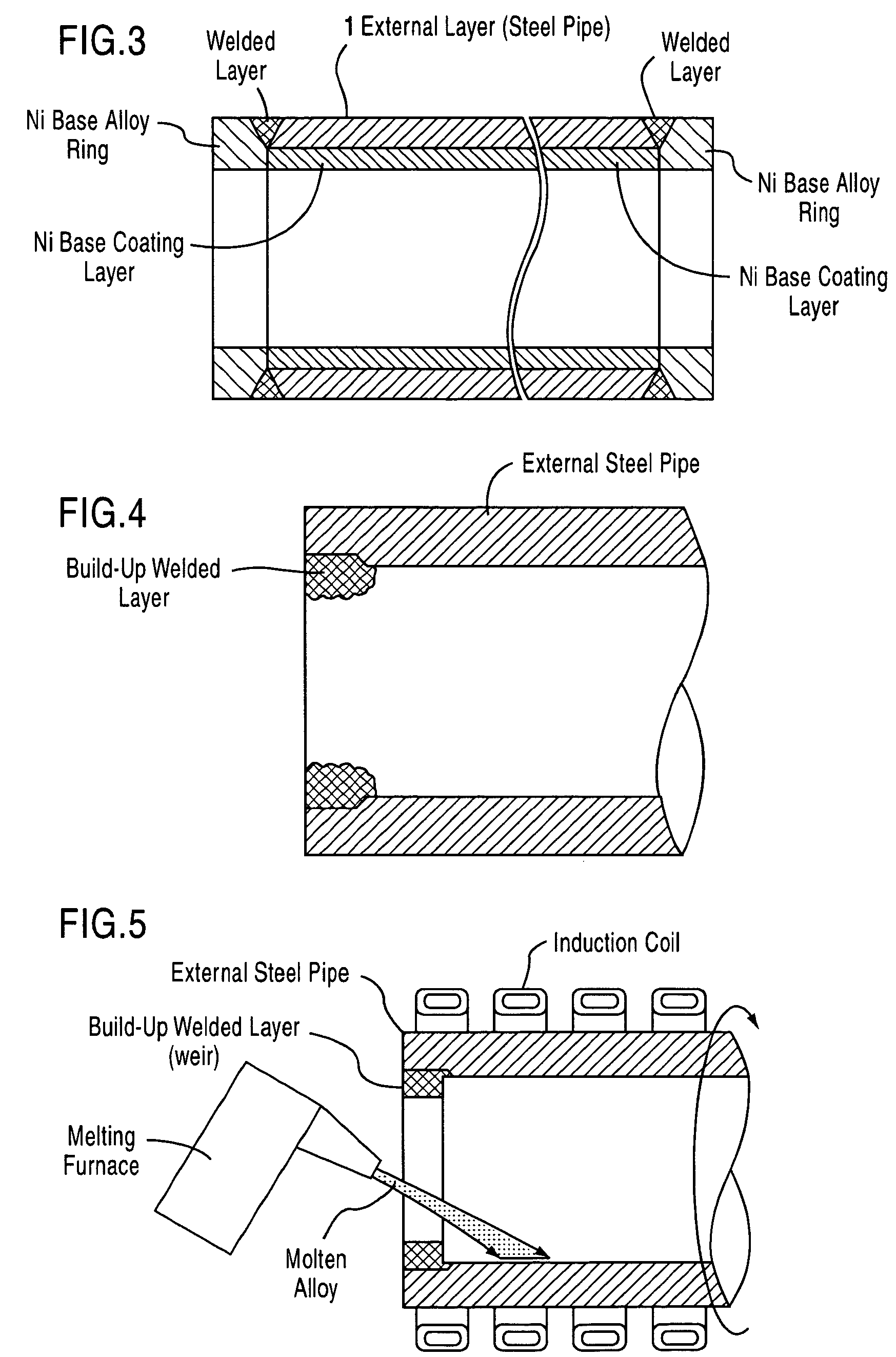Clad pipe
a technology of clad pipes and clad pipes, which is applied in the direction of drilling pipes, packaging, and synthetic resin layered products, can solve the problems of bending of pipes, increased cost, and formation of the entire thickness of pipes by high alloys, and achieves excellent corrosion resistance against hydrogen sulfide, easy welding, and less cost.
- Summary
- Abstract
- Description
- Claims
- Application Information
AI Technical Summary
Benefits of technology
Problems solved by technology
Method used
Image
Examples
Embodiment Construction
[0030]Embodiments of the invention will be described hereinafter with reference to the accompanying figures. It should be understood based on this disclosure that various other modifications can be made by those in the art based on these illustrated embodiments.
[0031]FIGS. 1 to 3 are explanatory views showing basic structures of clad pipes according to preferred embodiments of the present invention. In FIGS. 1 and 2, an external layer 1 is constituted by a carbon steel pipe or a low alloy steel pipe, and a clad layer 2 is made of Ni base anticorrosion alloy. The both end portions of the clad layer 2 are formed by build-up welding (Ni base alloy of composition 1).
[0032]The section (area 4) of the clad layer 2 located between the build-up welded layers 3 formed at both end portions of the tube is made of Ni base alloy (Ni base alloy of composition 2) having a composition in which solidus-curve temperature is 1300° C. or less and lower than the solidus-curve temperature of the Ni base ...
PUM
| Property | Measurement | Unit |
|---|---|---|
| solidus-curve temperature | aaaaa | aaaaa |
| solidus-curve temperature | aaaaa | aaaaa |
| solidus-curve temperature | aaaaa | aaaaa |
Abstract
Description
Claims
Application Information
 Login to View More
Login to View More - R&D Engineer
- R&D Manager
- IP Professional
- Industry Leading Data Capabilities
- Powerful AI technology
- Patent DNA Extraction
Browse by: Latest US Patents, China's latest patents, Technical Efficacy Thesaurus, Application Domain, Technology Topic, Popular Technical Reports.
© 2024 PatSnap. All rights reserved.Legal|Privacy policy|Modern Slavery Act Transparency Statement|Sitemap|About US| Contact US: help@patsnap.com










